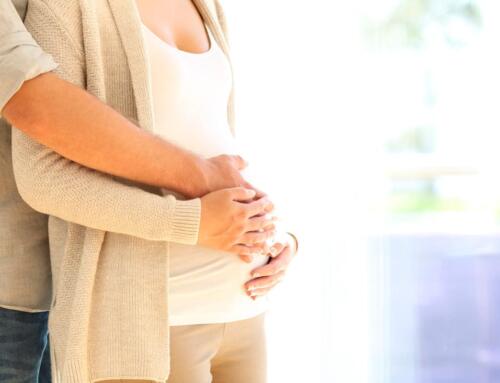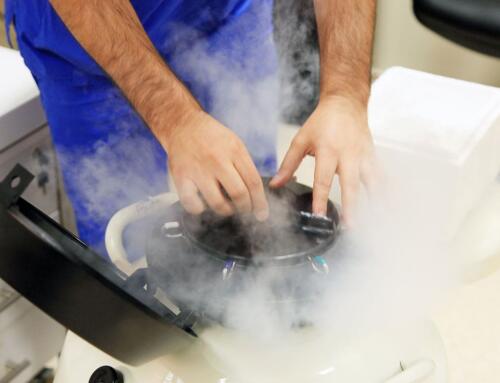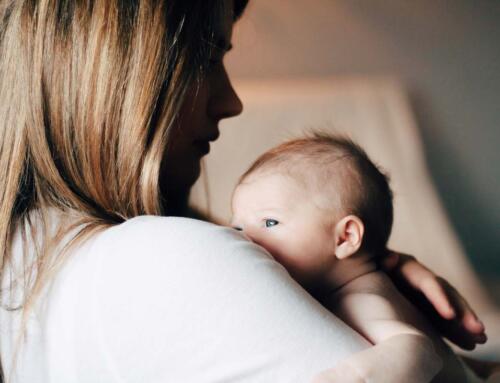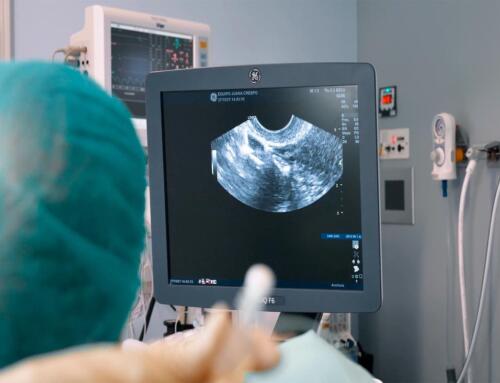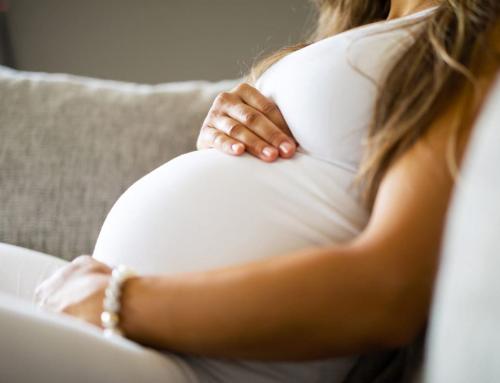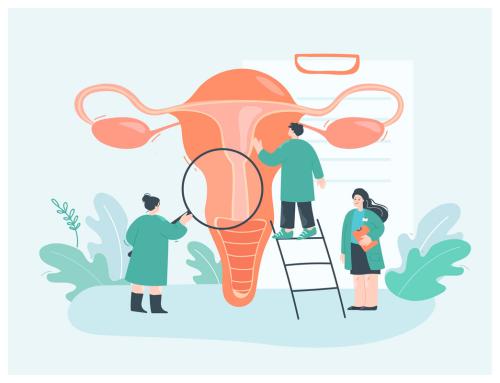A uterine prolapse occurs when the uterus shifts out of its normal position over the vaginal area due to the stretching and weakening of the muscles and ligaments that support the pelvic floor.
As a result, these structures fail to offer sufficient support to the uterus, leading it to slide into the vagina and protrude, resulting in various consequences for the woman.
Symptoms of uterine prolapse
Uterine prolapse is a medical term that describes the downward movement of the uterus into the vagina. Diagnosing this condition can be complicated or delayed, particularly in mild cases, as its symptoms may mimic those of vaginal childbirth or menopause.
In moderate or severe cases, uterine prolapse may present with discomforting symptoms that intensify during prolonged periods of sitting, including:
- Urinary incontinence.
- Sudden urges to urinate.
- Feeling that the bladder doesn’t empty completely when urinating.
- Pain during sexual intercourse.
- Constant pressure in the vagina or pelvis.
- Lower back pain.
- Frequent bladder infections.
- Vaginal bleeding.
- Uterine cervix ulceration.
- Significant increase in vaginal discharge.
- Sensation of ‘something’ coming out of the vagina.
- Noticing vaginal tissue rubbing against clothing.
- Feeling like sitting on a small ball.
Types of uterine prolapse
Depending on the direction of uterine displacement, we distinguish between:
- Cystocele: Uterine displacement occurs anteriorly (forward).
- Rectocele: Uterine displacement occurs posteriorly (backward, towards the rectum).
Moreover, we can establish different degrees of uterine prolapse depending on the level of ‘detachment’ of the uterus and whether it protrudes from the vulva or not.
- Grade 1: The uterus has lowered, but its cervix cannot be seen or felt from the vulva.
- Grade 2: The uterus descends, and its cervix is visible along the front and back walls of the vagina.
- Grade 3: The uterus is positioned up to 1 cm outside the vulva.
- Grade 4: The uterus extends more than 1 cm beyond the vulva.
Does uterine prolapse have treatment? How does it affect fertility and assisted reproduction treatments?
In essence, uterine prolapse typically does not impact female fertility, as it does not disrupt the functioning of the ovaries, the progression of the egg through the fallopian tubes, or the movement of sperm.
Unless it causes discomfort during sexual intercourse or its symptoms significantly affect daily life, specific treatment may not be necessary. However, it’s crucial to note that this condition can lead to complications during pregnancy, including cervical infection, urinary retention, spontaneous abortion, or premature birth.
Therefore, it is recommended to take preventive measures or address it in its early stages, such as by engaging in Kegel exercises to strengthen pelvic muscles, before considering assisted reproduction treatments. Generally, adopting dietary changes to alleviate constipation, maintaining a healthy weight, and avoiding heavy lifting can contribute to the treatment of uterine prolapse.
The use of pessaries, thread-like devices placed inside the vagina to support the uterus, is an alternative when the detachment begins to worsen. Surgical intervention is advised only in cases where the degree of uterine descent is severe and/or symptoms are significant.
Risks of uterine prolapse surgery
While both the procedure and the recovery period vary for each woman, surgical risks associated with uterine prolapse encompass potential infections, damage to nearby organs like the bladder and intestine, bleeding, and adverse reactions to anesthesia.
In the case of opting for reconstructive surgery, a common choice for young women aspiring to become mothers, options include:
Utilizing stitches to mend weakened structures of the pelvic floor without modifying the width and depth of the vagina for sexual function.
Employing a ‘mesh’ to provide support to vaginal tissues.
Causes of uterine prolapse
The primary cause of uterine prolapse is aging and a decline in estrogen levels. As a result, this condition is more prevalent among menopausal women, particularly those with a history of multiple vaginal deliveries.
Additional factors that can contribute to the detachment of the uterus from the vagina include:
- Multiple childbirths.
- Giving birth to babies of high weight and length.
- Complicated labor.
- First childbirth at an advanced age.
- Obesity.
- Prolonged constipation.
- Infections in the pelvic area.
- Lifting heavy objects.
- Chronic cough.
- Previous pelvic surgeries.
- Pelvic tumors.
- Accumulation of fluid in the abdomen.
Can uterine prolapse occur during pregnancy? Is it dangerous?
While it is a common concern for many expectant mothers, uterine prolapse is an uncommon condition during pregnancy. It may manifest in women with a history of pelvic floor issues, often linked to complications in prior or multiple pregnancies.
Occasionally, uterine prolapse may occur in young pregnant women with factors such as obesity, congenital connective tissue disorders, hyperlaxity (excessive tissue elasticity), or chronic constipation. In these instances, prolapse can result in discomfort in the perineum, described as a ‘sensation of a lump or weight in the vagina,’ and may cause skin lesions on the prolapsed mucosa, prompting heightened concerns.
👉 Is uterus in retroversion a fertility problem?
When is it advisable to see a doctor?
Uterine prolapse is linked to premature births, miscarriages, and infectious complications in the mother throughout pregnancy. If symptoms arise, it is advisable to seek consultation with a gynecologist for a pelvic examination.
Concerning the question of whether pregnancy is possible with uterine prolapse, reparative treatments—both surgical and through exercises—do not necessarily impact fertility and may assist in mitigating risks in subsequent pregnancies.
For any uncertainties or inquiries, feel free to reach out to us. We specialize in fertility and assisted reproduction, tailoring our treatments to address the unique complexities of each patient.



